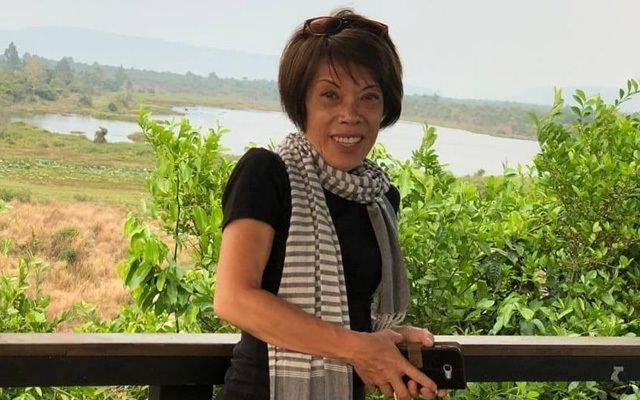In November, Catherine Germier-Hamel stepped into the shoes of chief executive officer at Destination Mekong at a time when the region was starting to reopen. She is now tasked with helping ease regional tourism recovery and steer rebound in a more sustainable direction
 What are Destination Mekong’s (DM) priorities for 2022?
What are Destination Mekong’s (DM) priorities for 2022?
Now that we are reaching a post-pandemic situation, new narratives, business models, visions and mindsets are needed. In this context, DM is planning to launch programmes for the resilience and recovery of the Greater Mekong Sub-region (GMS) tourism sector. We have to have our feet on the ground to re-connect with GMS tourism players, our community.
At the Destination Mekong Summit in October, we announced the incorporation of DM as a full-fledged company in Singapore. Moreover, we are in the process of incorporating DM as a non-profit enterprise in Phnom Penh since Cambodia’s Ministry of Tourism has offered to host our executive offices.
Since taking over as CEO, what have you and the new executive team been doing differently?
During the first half of 2022, the executive team set the necessary organisational structure and governance to stand as an independent, efficient and transparent regional Destination Management Organisation. Simultaneously, we have been developing DM the same way as a start-up, or rather an impact enterprise. Consequently, we have focused on strengthening our brand awareness and exposure, building a strong community and highlighting our value proposal in order to attract funds and resources.
The team has also worked on the elaboration of a roadmap for consolidation of our existing initiatives and programmes, and the identification of new business development opportunities while sending a strong message of confidence and resilience to all industry stakeholders in the region – with a special emphasis on micro, small and medium enterprises. Our overarching aim is now to champion the whole Mekong sub-region as an attractive sustainable destination.
What new initiatives and frameworks is DM working on?
New projects include the Mekong Micro-Certification Programme, a skills development toolkit for tourism sustainability and marketing, and Mekong Discovery Centres, an online and offline network of smart, eco-friendly, multipurpose and multi-branded tourism hubs aimed at supporting the sustainable development and marketing of secondary, developing and emerging travel destinations in rural and semi-urban areas in the GMS.
We have also appointed special advisors to support the development of innovative cooperation frameworks between the Mekong and Republic of Korea and Japan, two major source markets, with investors and development funders for the region.
Over the coming months, DM will pursue efforts to build a strong and resilient network of members and partners. However, its business model will not and cannot depend on membership fees only. It will mainly rely on the sale of innovative products and solutions, consulting and training services, advertising, and collaborations with organisations committed to corporate social responsibility and environmental, social and corporate governance.
What are some of the biggest challenges faced by GMS tourism players currently?
The near post-Covid time, also marked by the invasion of Ukraine and raising concerns over climate change among other global crises, have created new challenges and opportunities for GMS as well as DM. The easing of travel restrictions in GMS has yet to produce significant results and we can still feel reluctance from long- and mid-haul travellers. It is difficult to make projections in these uncertain times but hopefully we can expect a significant rebound within the next years, provided we make it not only desirable but irresistible.
Presumably, we will never revive the same situation as pre-Covid but we don’t want that. We want to promote an innovative model of tourism that is not obsessed by volumes but rather by value creation, with better contribution to local communities and their environments. We have to come up with smart and sustainable ways of doing tourism. I believe we should also develop an Asian way, even a South-east Asian way, of envisioning and practicing sustainable tourism.
How is DM helping to stimulate travel rebound in GMS?
GMS remains one of the world’s most promising tourist destinations and its fundamental assets have not been washed away by the pandemic. However, it seems hard to keep smiling when one has lost almost everything, including hope, and in some ways the sense of hospitality.
For these reasons, we will keep highlighting the contribution of tourism to the well-being and empowerment of local communities. This involves better distribution and dispersion of physical and financial flows, improved infrastructures, more climate-resilient facilities and services, more connectivity and accessibility, and the development and marketing of appealing community-driven destinations and experiences that can be included in multi-country itineraries.
Finally, as we intend to strengthen our capacity to deliver outstanding services and solutions to our community, we must secure the necessary resources, human and financial, so we can operate in a sustainable way.




















